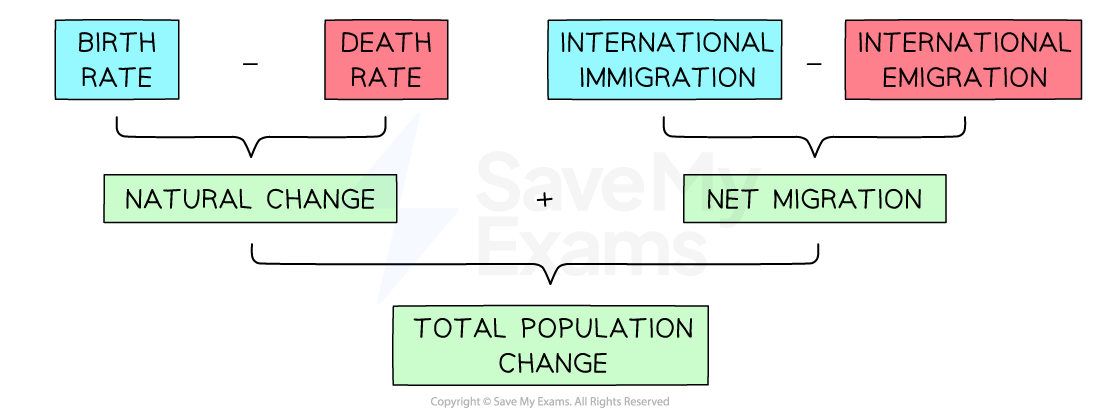Topic 4b - Diverse Places
1/12
Earn XP
Description and Tags
Name | Mastery | Learn | Test | Matching | Spaced |
|---|
No study sessions yet.
13 Terms
Factors populatiion can vary by
Total numbers
Structure
Increasing/decreasing certain places
Place
Parts of geographical space where physical and human elements of a society exist
Important aspect is how individuals and groups perceive, engage with, and form attachments to it
Factors affecting a place
Physical nature
Residents jobs
Connections (internal and external)
Internal connections
People, employment, housing. andservices
External connections
Government policies, globalisation
UK population
67.8 million (2023)
Increase of 11 million+ in the last 50 years
Southeast and London have seen much more growth than the northeast
Has an ageing population (life expectancy has increased and death rate has fallen)
Rural-urban continuum
A spectrum from the most rural to must urban place that everywhere can be put on
Population characteristics vary along it
Population density
The number of people per unit area (km2) which is the total population of the area divided by its size
Population structure of urban areas
Younger (high proportion 20-4 year olds)
More ethnically diverse
High fertility rates
Population structure of rural areas
Old population (50+)
Lower fertility rate
High mortality rate
Less ethnically diverse
Factors affecting population density
Accessibility
Physical geography
Historical development
Planning policies
Components of population change
Is the outcome of natural change and net migration

Fertility rate
Average number of children born to women of childbearing age